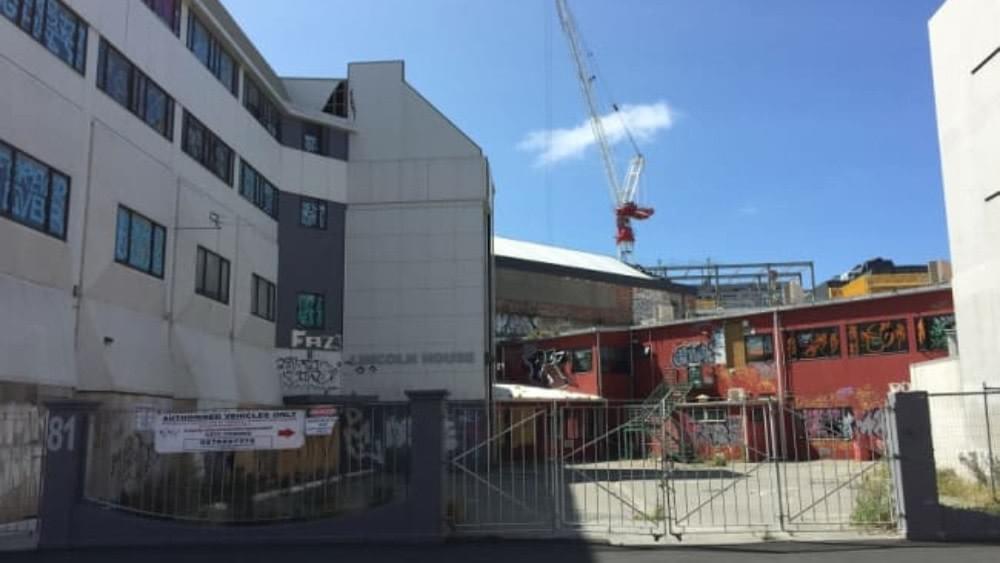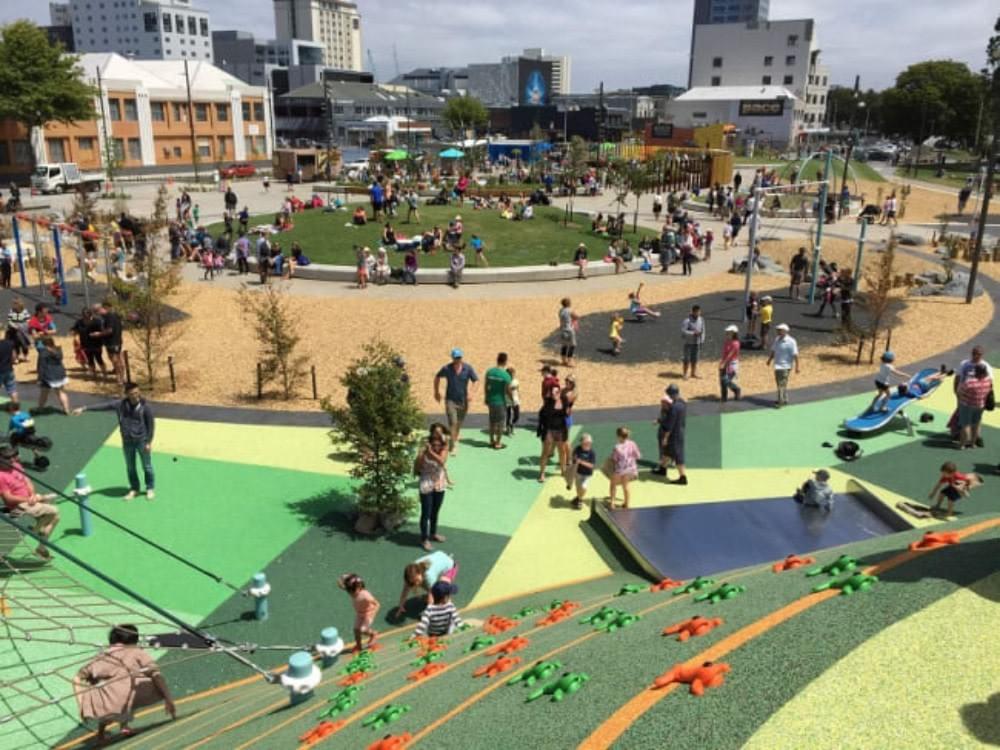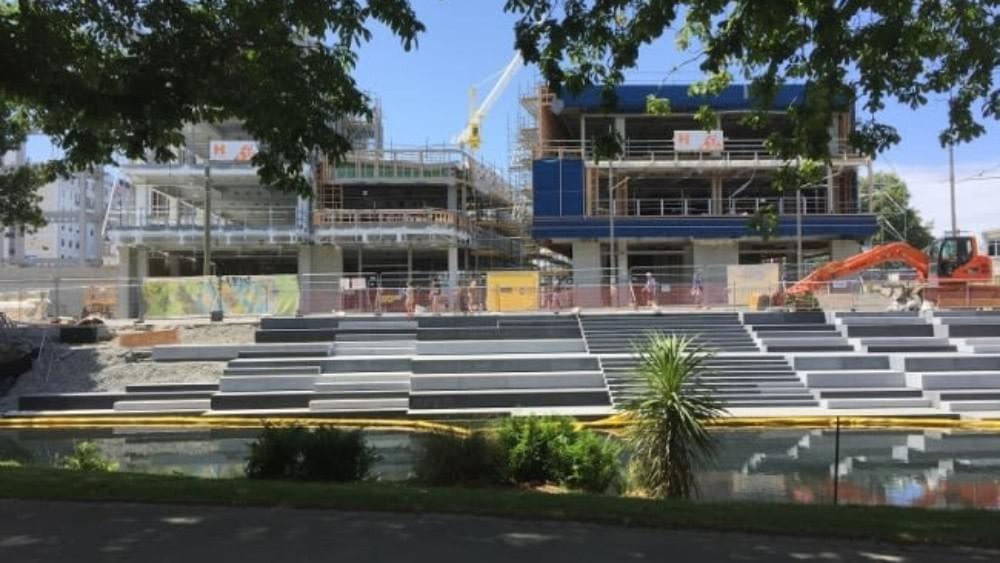Mature willows gently sway in the morning sun dotting the edge of Avon River, where ducks, eels and trouts go about their daily activities. The river runs through Hagley Park, the Botanical Gardens, the city centre and many suburbs, creating pockets of green spaces along it.
Pre-earthquake, discovering heritage buildings and courtyards was delightful, as were the Cathedral Square weekend markets and the pedestrianised City Mall. The quiet suburbs would offer their front gardens to passers-by for their visual enjoyment. These places looked inviting, calling for neighbourly interactions and civic participation. The distinctive Canterburian landscape has stayed the same and redevelopments will provide safer and newer places – but the city seems to be at the crossroads of becoming more inward-looking and less welcoming. Will Christchurch live up to the Garden City tagline in the future?
Christchurch looks very different now compared to 5 years ago when two major earthquakes hit (Sep 2010 and Feb 2011), killing 185 people and damaging 100,000 homes. About 8,000 homes are being demolished in the residential red zone, an area to the city centre’s north east ‘where the land has been so badly damaged by the earthquakes it is unlikely it can be rebuilt on for a prolonged period’ (see CERA map). The city centre was affected the most – losing many workers, memories and assets. 1,240 central city buildings and the places that we used to love have been demolished, 20% of which were heritage buildings. Large sites packed with gravel now dominate the scene, offering plenty of free car parking, but little else. A city that was once known for Gothic Revival architecture can no longer claim to be New Zealand’s most European city, at least architecturally.

Land prepared for residential development in the East Frame
There was a moment of panic after the earthquakes, as many left the city to escape the stress of constant aftershocks, and to find an alternative home, work and a sense of normality. The 4% drop in the population between 2010 and 2012 was palpable on the streets and public spaces; the loss of places, social circles and things to do had created a ghost city where the locals say they could hear a pin drop at night.

No one visits the city centre at night, and the lack of passive surveillance and activities attracts vandalism
But there is hope.
With so much infrastructural work, the construction industry is now the most common industry with 59% increase in the number of workers (see census inforgraphic) who are contributing to the local economy, and also its identity. Christchurch City Council just got $635 million insurance payout, which will help rebuild the city. With large investments going into the centre – now feels like the right time to pause and ask: are we building the future that inspired us back in 2011, when we had clear values and aspirations for how we wanted to live?
I think back to the amazing community engagement process by the Christchurch City Council called ‘Share an Idea’. The 105,991 ideas collected for the Central City Plan development were summarised into six themes: green city; distinctive city; urban life; market city; transport choice; and remembering the earthquakes. It felt like the community had spoken and the city centre was going to be more compact, smarter and greener. It would be a real triumph, a story of a city that showed the world how to turn a natural disaster around.
There certainly have been positive changes and new micro-scale culture in the city centre. Grassroots responses like Gap Filler and various street artists are what the city desperately needed pre-earthquake to satisfy the creatives and hipsters. Transitional retail precinct Re: Start has been an inspirational project, although its land will soon be returned to the owner for permanent redevelopment. The much anticipated Margaret Mahy Family Playground opened last December and it includes nature-themed play equipment, picnic spots and food stalls. Compared to Christchurch before the earthquakes, the city centre is quirkier and less traditional; more generous and less transactional.

Margaret Mahy Family Playground is the result of another extensive community engagement that involved school children of varying age groups. It is free, open 24/7 to the public and attract many families into the empty city centre.
While the transitional phase has led to innovation and creativity, the future of Christchurch relies on longer-term investment. What used to be small scale offices, shops and houses have been cleared and the lands amalgamated to make room for large developments: apartments on the East Frame and various precincts. As such, the building and public realm designs face the inevitable fate of becoming ‘same same’, lacking diversity in materiality, detail, scales and user groups. “Too much glass”, “too grey”, and “too big”: there are increasing concerns from the community about how the city centre is shaping up. Publicly accessible private lands are likely to look and feel exclusive – deterring non-residents from using the through-block links. At the anticipated price tag of $500,000 for a one-bedroom apartment, I wonder how quickly the centre will be gentrified, further driving away the ‘undesirables’.

Will new developments help create the Christchurch character we want?
The character of the suburbs is changing too. There are more cars on the road due to roadworks and detours, and shopping centres and supermarkets are prevalent. Many have taken the opportunity to improve their houses with the insurance payout, putting up new street front fences. The hard, blank walls taller than humans mark the property boundary line and butt right up to the footpath edge, keeping out traffic noise and unsolicited looks. Inward-looking and private, the city’s homes seem to be more closing in than opening up. It didn’t used to be that way (my parents still remain proud of receiving the Community Pride Garden Awards 7-8 years in a row). Many houses that haven’t gone though ‘improvements’ still boast inviting street frontages, with setbacks covered in greenery and low, permeable, interesting fences. These houses share their gardens – and provide the perception of safety, and contribute positively to the neighbourhood character and the making of ‘Christchurch the Garden City’.

The future character of Christchurch will not only be determined by the city centre, but also the community’s contribution to the public realm. ‘Christchurch the Garden City’ should not be just about council-managed or developer-owned parks and gardens; it should be an aligned vision agreed and delivered by the people of Christchurch.